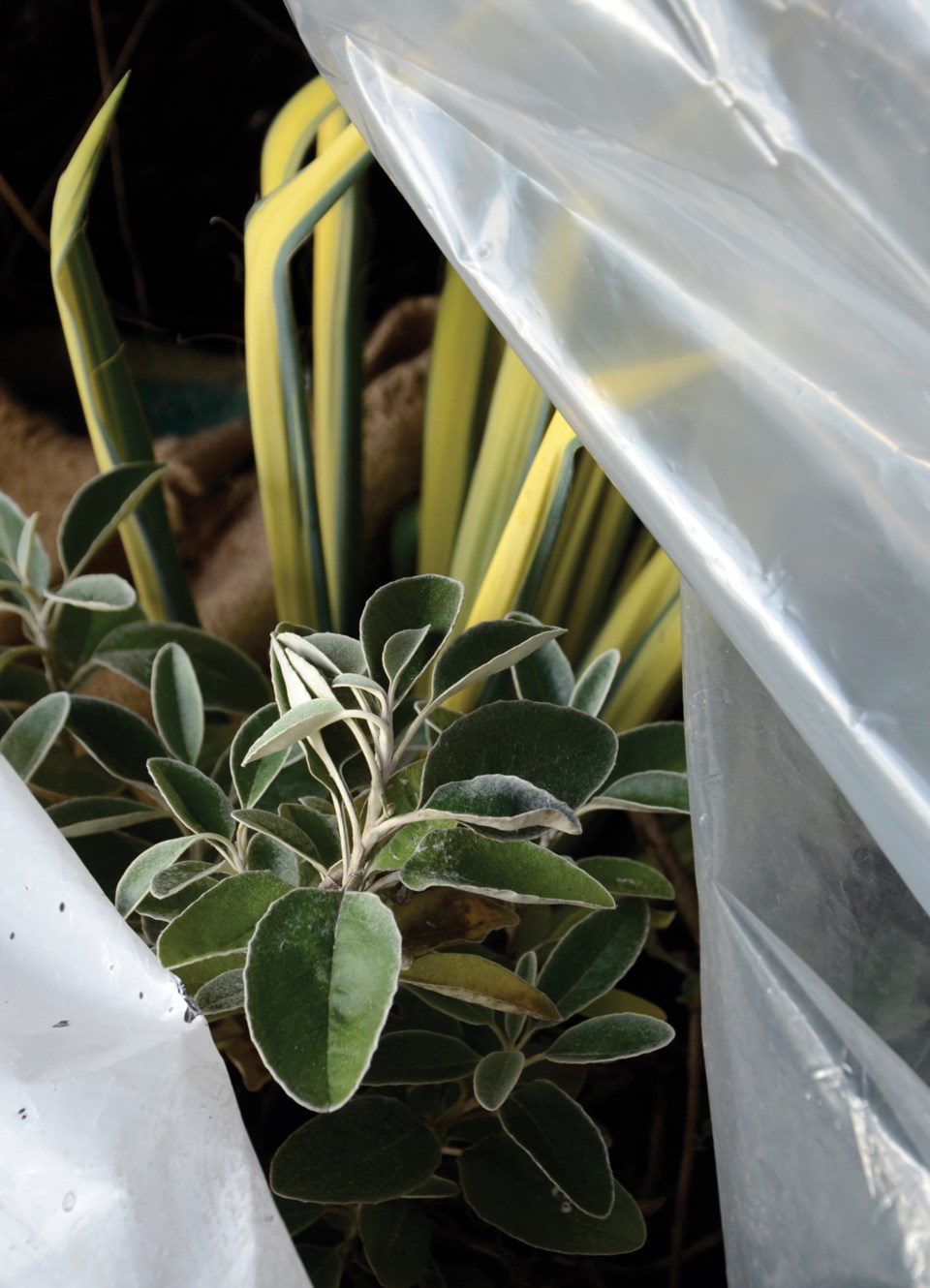With family and friends dropping in for December visits, work in the garden sometimes has to be done on an emergency basis only.
With those thoughts in mind here's my December garden staging list.
Before any bed or lawn work can begin there's the need for perennial plant care in winter.
With perennials, it's all about the seed heads for winter display. The seed head must be personally interesting for you to be able to share your interest with family and friends. Choose those perennial stalks you are interested in and leave them standing; cut all other perennial stalks to the ground. A quick way to do this is to use a weed eater. Regardless of how you cut the stalk down, cut as low as possible without damaging the buds or new shoots at ground level, but leave grasses standing until March.
The best organic advice I can give you about leaves is to leave them laying on the ground and cover them with a "show cover" of mulch. There are too many benefits for me to talk about herein related to leaving leaves to lie but the practice saves time, it's good for earth and feeds the soil and plants, the show cover mulch hides everything. And no, it's not a lazy thing to do.
When it comes to pruning, remember we are staging the home and garden for Christmas, not necessarily doing primary horticultural work. Beyond knowing when to prune which plant for any purpose, there's the issue of managing pruning timing around sub-zero temperatures. Of particular concern is shade-leaf burn, which occurs when plants such as yew, boxwood, laurel and other plants are pruned to expose leaves growing on the interior of the plant to light, air and frost, which burns the leaves.
The pruning of coniferous and broadleaved evergreens during winter should occur during above-zero temperatures if possible and not be done in advance of a hard freeze to avoid shade leaf burn.
Not including safety issues, pruning for Christmas staging should mainly consist of cutting dead, diseased, damaged or detracting branching - cosmetic work, in other words. Save the real pruning work for January and February.
After the other work in the beds is done, look at the visual presentation of the beds, veggie garden and lawn to set the tone for the feel of the garden. To make your garden look its best, work by first clarifying bed and turf outlines. Sharp edges define space and provide the viewer the opportunity to experience the landscape rather than having to figure it out. Cut out those edges cleanly and adjust any irregular lines to become smooth and flowing. After lineout is done, grade with a steel rake along the bed's profile to adjust grading to match line. Add, remove or shuffle soil or mulch as needed to build a uniform and gradually flowing profile from bed to lawn edge. Next, apply a show coating of mulch. A show coating is one to two inches or just enough to cover the surface evenly, which dramatically improves bed and plant presentation. Once line-out and mulching are done and providing the ground is clear of snow and the weather is mild, cut the lawn with a mower or weed eater to make the lawn's edge crisp and uniform.
Now that the garden is groomed, consider planting a few staged splashes of colour to brighten everyone's experience. Choose planting locations near the front door, along parking areas or near a roadside address sign or mailbox.
Remember: it's staged planting so we are looking for maximum colour from a few plants.
Use frost-hardy pansies or violas in the beds. Plant kale or cabbage in pots near the front door under the roof overhang to keep plants dry and help them last. Don't forget to add a few colourful dwarf conifers or heathers to your pots. And if you have a garden that yields any form of cut plant material then choose some interesting seed heads, fruits or interesting stems to make dried displays in pots by the front door. Fresh cuts right from the garden make personalized gifts for friends.
Power washing the walks and driveway will put the final touches on our garden staging work. Freezing temperature concerns aside, when power washing any semiporous surface like paving stone, it should be done to clean the surface only while avoiding blasting out sand from between the joints.
For natural stone, leave it unwashed to develop patina and accumulate some measure of dust. The dust accumulation fills in small crevices while highlighting ridges, revealing the stone's lines of force and contours.
Todd Major is a journeyman horticulturist, garden designer and builder, teacher and organic advocate. For advice contact him at [email protected].



